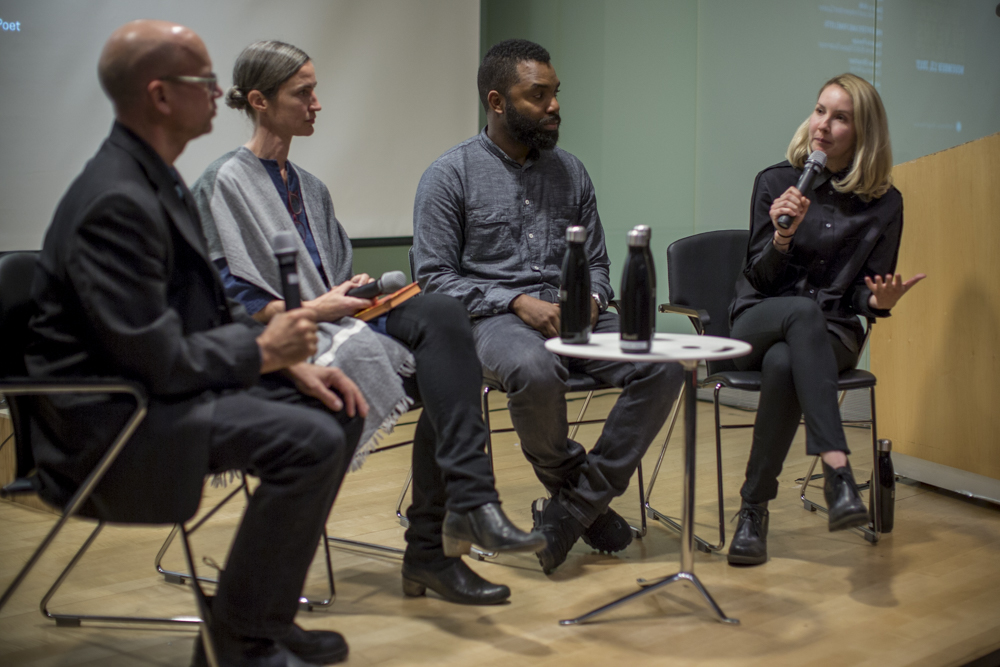From the archives, an Object of the Day post on an example of iridescent design from the collection.
This urn-shaped vase represents important historic glass making techniques whose possibilities were expanded during the revival of glass production in late 19th-century Venice. The form features two spectacular variations of glass for the viewer to enjoy and ponder. At first glance, the most eye-catching feature is the inner layer of avventurina (also known as aventurine), the metallic copper-toned...
To celebrate the opening of Saturated: The Allure and Science of Color (May 11, 2018-January 13, 2019), Object of the Day this month will feature colorful objects from the exhibition. This vase by Anzolo Fuga, was created using clear glass (cristallo) which was decorated with vertical rods of opaque white glass (lattimo) and multi-colored murrine. Murrine are colored...
To celebrate the opening of Saturated: The Allure and Science of Color (May 11, 2018-January 13, 2019), Object of the Day this month will feature colorful objects from the exhibition. This post was originally published on January 1, 2013. Murano, an island located just north of Venice, Italy, in the Laguna Veneta, has been a glass-making center since...
In celebration of our new exhibition The Senses: Design Beyond Vision, this Object of the Day post explores the multisensory experience of an object in Cooper Hewitt’s permanent collection. The invention of the incandescent light bulb in the nineteenth century not only advanced technology, but also design, especially into the twentieth century. This bulbous, blown...
This coffee maker was devised by chemist and inventor, Dr. Peter Schlumbohm, for the Chemex® Corporation. It is made of heat-resistant non-porous borosilicate glass, and surrounded by a wood collar tied with a leather thong, that serves as an insulated handle with which to pour the hot beverage. The ingenious use of glass allows the...
In this age of electronic assistants, it is hard for many to fathom a time when telephone service was limited and mail, or what today is referred to as “snail mail”, was the order of the day. During the early decades of the twentieth century written letters were the most common form of communication, and...
The Rhode Island School of Design Glass Department celebrated the launch of its new book, Wonder: 50 Years RISD Glass, with a panel discussion.
This extraordinary chalice takes its inspiration from dragon-stem goblets made by the legendary Venetian glassworkers in the seventeenth century. In this example, also made in Venice but in the late nineteenth century by Salviati & Company, the dragons have been elevated to the body of the cup. Several remarkable glassworking techniques are on display in this object....
Sarah D. Coffin discusses the technical excellence of this Lobmeyr Ambassador vase, now on view in The Jazz Age: American Style in the 1920s.
In 1929, George Sakier was hired as a consultant for the well-established American glass manufacturer Fostoria, for whom he would work for the next fifty years. With a background as an art director of French Vogue, Harper’s Bazaar, and Modes and Manners magazines, Sakier’s commercial savvy as well as his eye for trends served him...
René Lalique was one of the most versatile jewelry artists working in the twentieth century, in that he was equally successful in two periods of design history. Lalique created both luxurious one-off pieces for fashionable ladies during the art nouveau period and also successfully created mass-produced glass pieces in the style moderne. Lauded during the...
Now on view in The Jazz Age: American Style in the 1920s, this Ambassador Vase was likely used in the dining room of Agnes Miles Carpenter's "Style Moderne" Fifth Avenue apartment.
One of the most wonderful mixtures of new technology-electricity-with elegant hand-crafted materials, in this case glass and metalwork, is this table lamp. It shines forth with the strength of electricity but uses soda glass to create a glow more associated with a pre-electrified era. William Arthur Benson, who was trained as an architect, took up...
The No. 2402 bowl, shown here in what the Fostoria Glass Company called “ebony,” is one of eight pieces of glass tableware designed by George Sakier in the museum’s collection. The bowl was made in 1930, just a year after Fostoria hired Sakier to be their main design consultant. The avant-garde look of this bowl...














